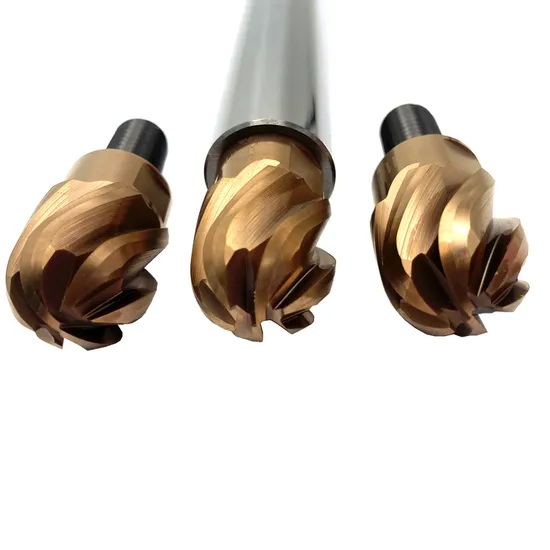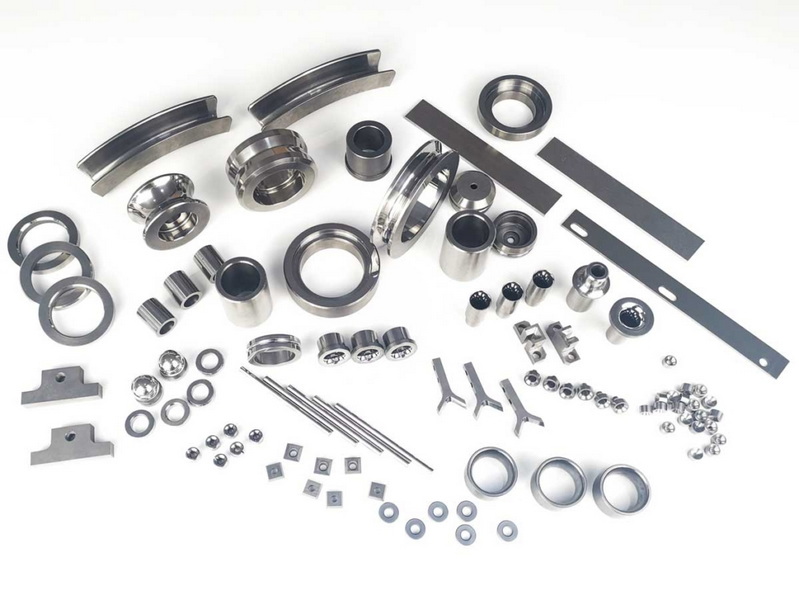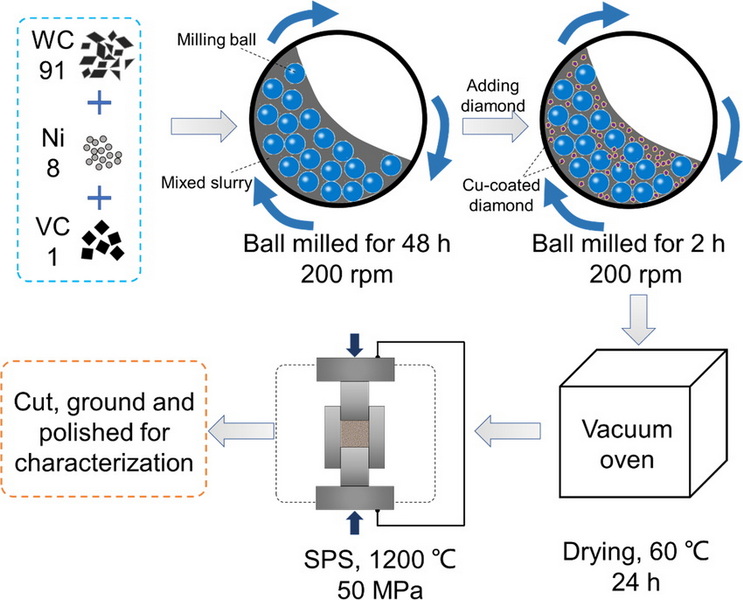Content Menu
● Introduction to Tungsten Carbide
>> Properties of Tungsten Carbide
● Challenges in Milling Tungsten Carbide
● Methods for Milling Tungsten Carbide
>> 1. Machining in the Green State
>> 2. Using Specialized Tools
>> 3. Electrical Discharge Machining (EDM)
>> 4. Ultrasonic-Assisted Machining
>> 5. Laser Machining
● Tools Used for Milling Tungsten Carbide
>> 1. Diamond-Coated Tools
>> 2. PCD Tools
>> 3. Tungsten Carbide End Mills
>> 4. Ceramic Tools
● Considerations for Milling Tungsten Carbide
>> 1. Coolant Systems
>> 2. Machine Rigidity
>> 3. Tool Path Optimization
>> 4. Workpiece Fixturing
● Case Studies and Examples
>> Machining Tungsten Carbide on a DIY CNC Machine
>> Ultrasonic Machining of Tungsten Carbide
>> Laser Machining for Precision Parts
● Advanced Techniques and Future Developments
>> 1. Nanomaterials and Coatings
>> 2. AI-Optimized Machining
>> 3. Hybrid Machining Techniques
● Conclusion
● Frequently Asked Questions
>> 1. What tools are best for milling tungsten carbide?
>> 2. Can tungsten carbide be machined in its hardened state?
>> 3. What are the benefits of ultrasonic-assisted machining for tungsten carbide?
>> 4. How does EDM compare to traditional machining for tungsten carbide?
>> 5. What coolant systems are recommended for milling tungsten carbide?
● Citations:
Milling tungsten carbide is a challenging task due to its extreme hardness and brittleness. Tungsten carbide, often used in cutting tools and wear-resistant parts, requires specialized techniques and equipment for effective machining. This article will delve into the methods, tools, and considerations necessary for milling tungsten carbide successfully.

Introduction to Tungsten Carbide
Tungsten carbide is a composite material consisting of tungsten carbide particles bonded together by a metallic binder, typically cobalt. It is renowned for its high hardness, wear resistance, and thermal conductivity, making it ideal for applications in cutting tools, molds, and high-pressure components.
Properties of Tungsten Carbide
- Hardness: Tungsten carbide is extremely hard, which makes it difficult to machine using conventional methods.
- Brittleness: Its brittleness means it can easily crack or chip during machining.
- Thermal Conductivity: It has good thermal conductivity, which helps in dissipating heat generated during machining.
Challenges in Milling Tungsten Carbide
Milling tungsten carbide poses several challenges:
1. Tool Wear: The hardness of tungsten carbide causes rapid tool wear, requiring the use of specialized cutting tools like diamond-coated or PCD (Polycrystalline Diamond) tools.
2. Vibration and Cutting Forces: Controlling vibration and cutting forces is crucial to prevent micro-cracks and fragmentation of the material.
3. Machining Speed: Machining speed must be carefully controlled to avoid overheating and tool damage.
Methods for Milling Tungsten Carbide
1. Machining in the Green State
One common method is to machine tungsten carbide in its "green" state, before it is sintered. In this state, it is softer and can be machined more easily. The green carbide is mixed with paraffin wax and other alloys, allowing it to be machined like soft clay.
2. Using Specialized Tools
Specialized tools such as PCD, CNB (Cubic Boron Nitride), or ceramic tools are used for machining hardened tungsten carbide. These tools are more resistant to wear but still lose sharpness quickly.
3. Electrical Discharge Machining (EDM)
EDM is a non-traditional machining method that uses electrical discharges to remove material. It is effective for complex shapes but can be slow and expensive.
4. Ultrasonic-Assisted Machining
This method involves superimposing high-frequency oscillations on the tool rotation, reducing cutting forces and improving chip removal. It enhances tool life and machining efficiency.
5. Laser Machining
Laser machining can be used for precise cutting and shaping of tungsten carbide. It offers high accuracy but may require additional post-processing to remove heat-affected zones.
Tools Used for Milling Tungsten Carbide
1. Diamond-Coated Tools
Diamond-coated tools are widely used for machining tungsten carbide due to their high hardness and wear resistance. They are particularly effective for grinding and milling operations.
2. PCD Tools
PCD tools are made from synthetic diamond particles and are ideal for machining hard materials like tungsten carbide. They offer excellent wear resistance but are expensive.
3. Tungsten Carbide End Mills
Tungsten carbide end mills are used for milling operations and are available in various flute configurations. They are durable but may not be suitable for machining tungsten carbide itself.
4. Ceramic Tools
Ceramic tools, such as silicon carbide or alumina, can be used for machining tungsten carbide at high speeds. They are less expensive than PCD tools but may not last as long.

Considerations for Milling Tungsten Carbide
1. Coolant Systems
Using a coolant system is essential to reduce heat buildup during machining, which can damage both the tool and the workpiece. High-pressure coolant systems are particularly effective for maintaining tool life.
2. Machine Rigidity
The machining setup must be rigid to minimize vibration and ensure precise control over cutting forces. A rigid machine setup helps in maintaining accuracy and preventing tool breakage.
3. Tool Path Optimization
Optimizing tool paths can help reduce machining time and improve surface finish. Advanced CAM software can be used to generate efficient tool paths that minimize tool wear and maximize material removal rates.
4. Workpiece Fixturing
Proper fixturing of the workpiece is crucial to prevent movement during machining. Custom fixtures may be needed to ensure that the tungsten carbide part is securely held in place.
Case Studies and Examples
Machining Tungsten Carbide on a DIY CNC Machine
A YouTube video demonstrates machining tungsten carbide using a DIY CNC machine with a diamond grinding tool. The process, though slow, achieved impressive precision and surface quality. This example highlights the potential for hobbyists and small-scale manufacturers to machine tungsten carbide with the right tools and techniques.
Ultrasonic Machining of Tungsten Carbide
HIT's ultrasonic machining technology has been used to machine tungsten carbide with improved efficiency and tool life. This method reduces cutting forces and facilitates chip removal, making it suitable for complex shapes. Ultrasonic machining is particularly beneficial for applications requiring high precision and minimal material waste.
Laser Machining for Precision Parts
Laser machining is used in the aerospace industry for precision cutting of tungsten carbide components. It offers high accuracy and can be used for intricate designs, though it may require additional processing steps to remove any heat-affected zones.
Advanced Techniques and Future Developments
1. Nanomaterials and Coatings
Research into nanomaterials and advanced coatings aims to improve tool life and machining efficiency. These materials can enhance the wear resistance of tools, allowing for longer machining times without significant tool degradation.
2. AI-Optimized Machining
The integration of artificial intelligence (AI) in machining processes can optimize tool paths, predict tool wear, and adjust machining parameters in real-time. This technology has the potential to significantly improve the efficiency and accuracy of tungsten carbide machining.
3. Hybrid Machining Techniques
Hybrid machining techniques combine different methods, such as EDM and grinding, to leverage the strengths of each process. This approach can improve overall machining efficiency and reduce costs.
Conclusion
Milling tungsten carbide requires careful selection of tools, techniques, and machining conditions. While challenging, advancements in technology and specialized tools have made it possible to achieve high-quality results. Understanding the properties of tungsten carbide and the challenges it presents is crucial for successful machining operations.

Frequently Asked Questions
1. What tools are best for milling tungsten carbide?
The best tools for milling tungsten carbide are diamond-coated or PCD tools due to their high hardness and wear resistance.
2. Can tungsten carbide be machined in its hardened state?
Yes, but it is extremely challenging and typically requires specialized tools like PCD or diamond-coated tools. Machining in the green state is often preferred.
3. What are the benefits of ultrasonic-assisted machining for tungsten carbide?
Ultrasonic-assisted machining reduces cutting forces, improves chip removal, and enhances tool life, making it more efficient than traditional methods.
4. How does EDM compare to traditional machining for tungsten carbide?
EDM is effective for complex shapes but is generally slower and more expensive than traditional machining methods. It is often used when other methods are not feasible.
5. What coolant systems are recommended for milling tungsten carbide?
High-performance coolants that can effectively reduce heat buildup are recommended. Fluorinated cutting fluids are often used for their ability to stabilize workpiece temperature and prevent tool wear.
Citations:
[1] https://www.halocarbon.com/tungsten-machining-an-overview/
[2] https://www.hdtools.com.tw/Threading-end-mill/VUA-Tungsten-Carbide-Tread-Milling-Tools-Internal-External.html
[3] https://www.hit-tw.com/newsdetails.aspx?nid=298
[4] https://www.premachining.com/tungsten-carbide-machining.html
[5] https://www.cnczone.com/forums/material-machining-solutions/168238-milling-tungsten-carbide-new-post.html
[6] https://runchit.en.made-in-china.com/product/YENrRtfbIaco/China-Tungsten-Solid-Carbide-End-Mill-Endmills-4-Flute-Tungsten-Carbide-Milling-Cutter-for-CNC-Milling-Machine-Tool-D12-0-R1-0-30-L150-D12-4t-DRBJ1210-.html
[7] https://www.youtube.com/watch?v=QUksKUydT4s
[8] https://www.aliexpress.com/i/1005004716657330.html
[9] https://www.practicalmachinist.com/forum/threads/milling-tungsten-carbide.256136/
















